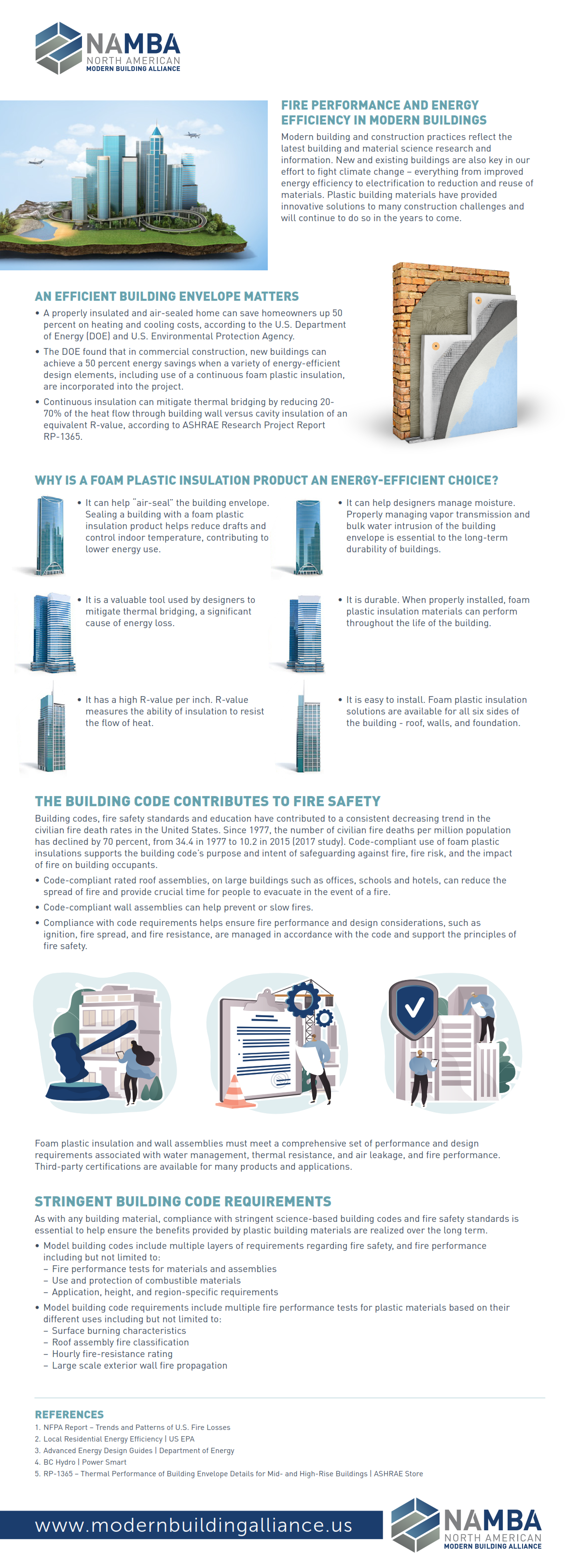Foam Plastic Insulation: Modern Energy Efficiency
Foam plastic insulation products are modern materials for residential and commercial buildings that be made of a variety of plastics, including polyisocyanurate, polystyrene and polyurethane. They help architects, contractors and other construction professionals meet the stringent energy code standards of today and tomorrow for both new construction and renovation projects.
Foam plastic insulation products are available in rigid boards or spray foam. They are durable, energy-efficient, and versatile. They can insulate and effectively seal gaps and close air leaks, which helps maintain indoor comfort and improve a building’s energy performance. When used in walls, roofs, and below-grade, insulation products are part of the assembly of materials that make up a building’s envelope.
Fire Performance of Foam Insulation
Members of the North American Modern Building Alliance are in the business of providing energy-efficient building products such as rigid foam board and spray foam insulations that meet stringent building code and fire safety standards. Code-compliant products and installations can help protect building occupants, construction workers and first responders from fire-related death and injury in buildings.
- Foam insulation when used in a code compliant roof covering assembly, on large buildings such as offices, schools and hotels, can provide crucial time for people to evacuate in the event of a fire.
- Foam insulation, when used in a code compliant wall assembly, can help prevent or slow fires that result from short circuits or other electrical malfunctions in a home’s or a building’s electrical wiring.
- First responders have a better chance of entering attics and crawl spaces when high-performing foam insulation is used in a code compliant assembly.

